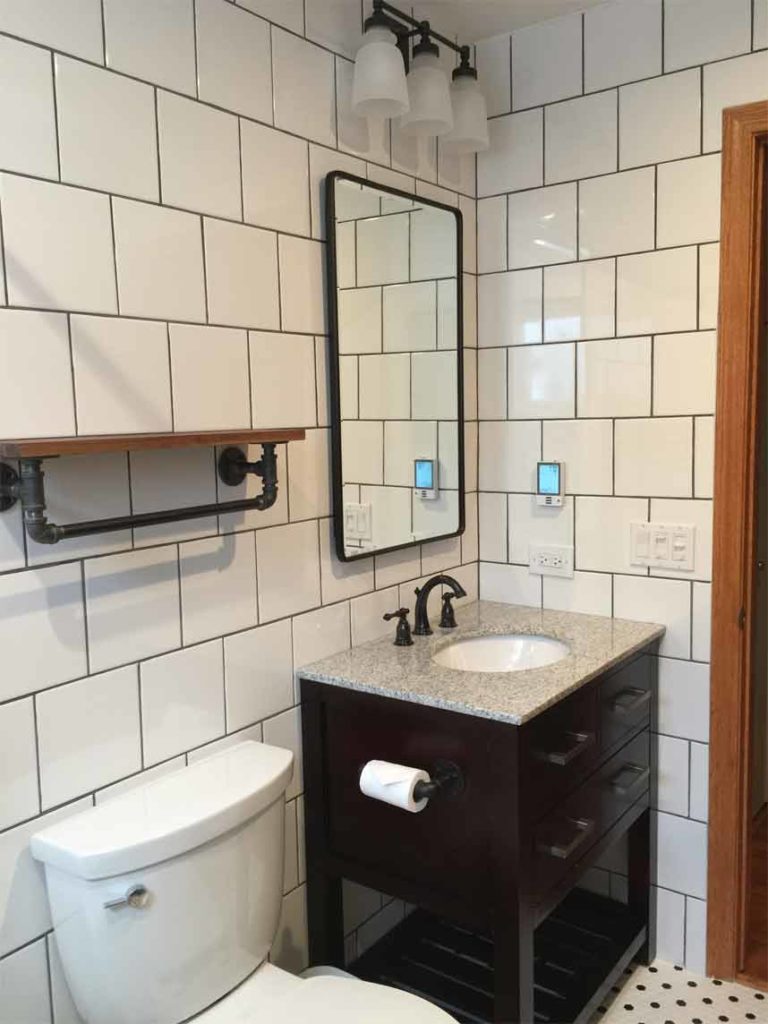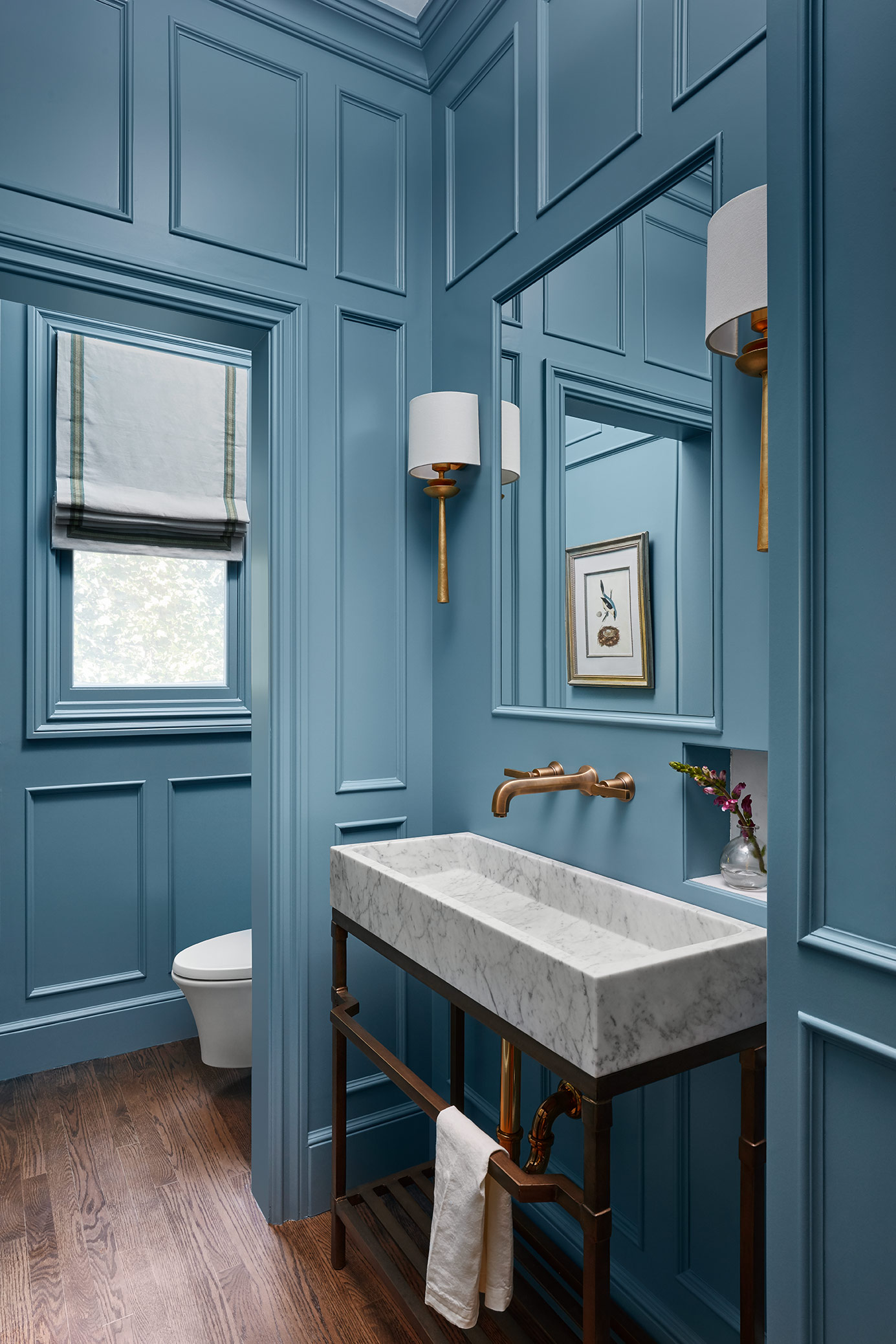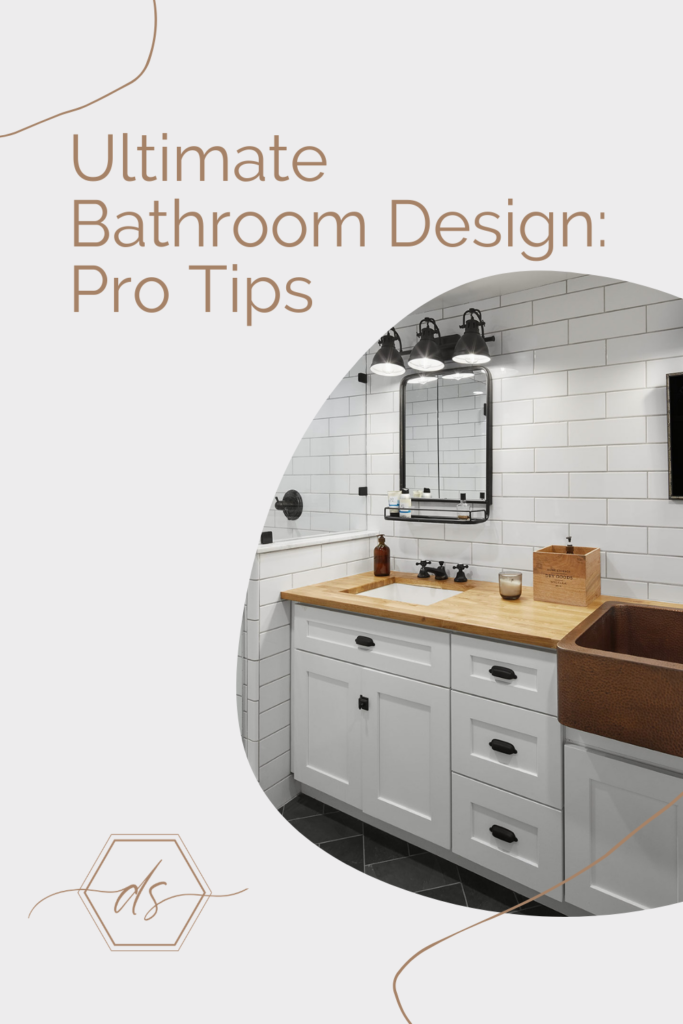When dealing with house interior design, it’s real easy to get confused and overwhelmed. How to decide what’s for you? What to do first and what comes last? Where to draw inspiration and get bathroom design ideas? Feeling lost is understandable. Here are my pro tips for ultimate bathroom design!

How to Get Started with Bathroom Design
1. Understanding your Budget
It takes a lot of time to get a vision of how you want everything to look. Starting is never easy but there sure are some tips that could help you along the way!
Before starting any remodeling or re-fresh project, knowing what you have to invest not only in a dollar amount. Crucial starting point – the amount of time that needs to be spent researching, procuring and managing.
There are many factors that will determine your budget for bathroom design. The cost of the contractor (or each of the trades) labor, permits from your city, the fixtures and finishes you select, potential unknowns (like hidden water damage, or electrical/plumbing that isn’t up to code). Of course, don’t forget YOUR time to manage these.
What are the factors that determine your budget?
If are you looking to simply spruce up an existing bathroom – you like the fixtures, but need a vanity with more counter space, or the lighting is outdated. Possibly you want to change the aesthetic, but not break any of the walls or change the layout. This type of design will be much more cost-effective than a full remodel where plumbing is repositioned, or tile has to be removed and installed.
If you want to change a bathtub into a shower, or add a separate shower, or move the toilet into a more private area, there is much more demolition and work required to move plumbing pipes, rebuild walls and replace tile walls and floors. These factors obviously will increase the overall cost and the timeline of your project.
What does your contractor need to know?
Knowing what your layout will be is the first thing you need to focus on. Once you have the contractor there to look at the space, they will need to know these details to give you an accurate price for this bathroom design. Actually, the more details you know up-front the more accurate a quote your contractor can give you.
Decisions such as the type of millwork you want, casings, baseboards and any custom shelving. The material and type of tiles you are using and where they will be used. The style of shower enclosure or glass door. The plumbing details like what kind of shower system or toilet… It’s all key in educating your contractor and knowing where your budget stands.

2. Curate an Inspiration Board/Bathroom Design Look You Like & a Wish List
Now that you have an idea of how much money you want to invest, keep that number in your back pocket until we get past this step – pulling together an inspiration board.
Check out your favorite decorating magazines, Pinterest or Instagram to compile bathroom design looks that draw you in. If you’ve got a large soaker tub in your dreams, search for bathrooms that have that key element in the space. This will most likely be the largest item in the room, and you’ll need to design the room around it.
Pinterest of course is a great spot to collect all your ideas, and you can easily share these with your contractor or a designer if you need to.
Now, why do I mention this when it seems obvious these days that you pin ideas that you love. This step is so important if you are not a designer because it helps to bridge the communication gap with your contractor. If you have a vision, you need to clarify every single detail with your contractor or you may not get the result you are looking for. This makes for two very unhappy people, you and your contractor.

3. Deciding on a Contractor
Good contractors can be tough to come by – these are some tips on how to find, select and vet out a contractor that will be right for you.
Depending on the scope of your project, you may not need a full contractor to do the work for you. If your plan is to refresh the bathroom, and not move any major fixtures, a handyman that is able to do basic electrical like swapping out switches and light fixtures, plumbing to re-attach drains, faucets and toilets, finish carpentry and painting, can be a very reasonable way to go for these smaller jobs.
But when it comes time to start moving walls, major plumbing fixtures and electrical work, finding a great contractor is key. One of the best ways to find a contractor is through word of mouth – ask friends and relatives if they’ve used anyone in the last 2 years and go and look at the completed work.
Ask them how the process went with that contractor, and most importantly take into account your sensibilities and personality vs. the person you are asking. If you are totally different, their impressions and requirements may be very different than yours – and their contractor may not be a good fit for you!
Some spots to check for bathroom and other design contractors are through thumbtack.com, Angies list.com these sites allow you to read reviews and see photos of some of their work.

These are the top vetting tips from my years of experience:
- Check that they’re licensed in your city – you can check this with your local city office. They should know the codes and by-laws & the permitting process in your locality.
- Ask for at least 3 RECENT jobs they’ve completed, they should have been completed within the last 2 years. Try to see jobs that are similar in scope to yours.
- Confirm that they’re insured! And have up-to-date policies.
- Go visit as many completed jobs as you can, and ask the homeowners questions about their experience. Keep your eye open for quality of work, details like how well everything fits together. Sometimes I look for small things that others don’t notice like the quality of the tile laid, grout lines, carpentry details… For example, are mitered corners perfect around windows and doors?
- Make sure you can communicate effectively, and that there is no language barrier.
- Get details about their PROCESS. If they don’t have it buttoned-down, with a timeline, contract, documentation of their process, be wary!
- Ask them how long they’ve been working with each of their trades – you want someone with long-standing relationships, the strength of these relationships is reflected in the work they do!

4. Start a Space Plan
The layout of the bathroom is where you can take two divergent paths. One option is to keep most of the plumbing where it currently is, that means in the same walls that the pipes are already in, the shower controls where they are and the toilet exactly in the same spot. Not moving these items will save you quite a bit on the plumbing side of things.
The other scenario is if you are pulling down a wall to increase the footprint of your bathroom, or want a completely different layout. For example, adding a shower area separate from a tub, adding a second sink or moving the toilet to its own private area. Contemplate all the ways you want to use the space, such as a dedicated make-up desk with mirrors. Do you want etched glass on the shower for privacy? Would pocket doors be more practical for a smaller space?
If you’re not working with a designer it is imperative that you meet with the contractor again. Review the space plan to see if what you want is possible with the bones of the space and if there are any potential issues that could arise. For example, you want to steer clear of placing plumbing on an exterior wall (a wall that is the outside wall of your home).

Here are some top tips to get the best out of your design:
- Use materials that you are willing to watch patina (age over time). If you want natural stone like marble or limestone, know that they take much more upkeep than ceramic, porcelain or quartz. They will need to be re-sealed every number of years and will mark or stain more easily.
- Use every bit of space for storage than you can! If there is a recess in a wall, use it for a recessed medicine cabinet! If it has a decent amount of depth, add a small linen closet.
- Lighting is key in helping you look your best and put on makeup or shave. Make sure you have overhead and wall lighting flanking your mirror to get optimal light for these tasks.
- If it’s in your budget don’t forget to put in a heated floor. I have to say, this is my favorite thing about my bathroom design! It makes such a difference in comfort at any time of day. Other wonderful luxuries are shower systems with sprays or toilets with extra features, like a heated seat or cleaning sprays.
- If possible, try to get as much natural light in the space – if you can install a skylight, do it!
- Make sure you have a proper fan that has enough power to pull the moisture out of the room. This will help prevent mold accumulation, and your grout easier to clean. It will also keep your finishes in better shape over the life of your bathroom.

5. Purchasing Your Finishes
This step can be a lot of fun or extremely overwhelming…or a bit of both. There are usually a few retail tile stores that you can get everything you need. If you desire more unique or speciality finishes, it’s best to work through a designer here.
To keep things streamlined, ask your contractor to purchase these items! That way they can coordinate the pick up and delivery, the amount needed and possibly contact you if there is a need for any specialty pieces specific for your design.
There are millions of options here! Today I’ll talk about two, plumbing finishes and tile finishes… I’ve limited it to two because I could keep talking until next week on this one!
Plumbing Finishes
Ok – let’s get to plumbing. There are so many beautiful metal finishes to choose from… Matte black, oil rubbed bronze, antique and burnished brass, and the tested and true chrome and brushed nickel finishes. In almost all cases you don’t want to mix and match them in your bathroom design. Once you commit to a finish, keep that color finish throughout the whole bathroom.
Know that not all finishes are created equal – the finishes with a color applied over metal can scratch or rub off over time. These are the black or oil rubbed bronze colors. These finishes you have to extra careful with the type of cleaning solutions you use.
Streaking and water spots can also be an eyesore if you are the detailed sort of person. These can show up on stainless steel, brushed nickel or other similar finishes. Some brands have a special coating to alleviate this problem – so if it’s important to you keep an eye out for those products.
Tile Finishes
Now let’s move on to our last tip for today – tile selections. If you’re designing on a budget, one of the best options is a classic white subway tile. You can find nice options at Home Depot that run less than $2.00 per square foot.
A mid-range tile will be in the $8 to $20 dollar amount, and designer options will be upwards of that amount.
When deciding on tile, keep in mind the scale of your space! Use appropriate size tiles for large footprints and smaller tiles for smaller bathrooms. For example, in most cases you would not want to use a 12 by 24 or 24 by 24 inch floor tile in a small powder room. If you love a herringbone or chevron pattern, you will always need more tile than a regular brick-lay pattern. Plan for adding more tile and more dollars to your budget for that style.
Put some thought into the color of floor you want – the lighter the floor the more you see hair and dirt, which of course leads to more cleaning and effort on your part.

Other Finishes
As with other finishes in your bathroom, tile and grout patinas over time. It develops marks, changes in color or stains over time. A natural stone will need to be sealed every few years depending on how much wear and tear it has received. Some stones like marble and limestone are softer and may chip or develop craters or impressions that are more difficult to clean.
I love natural finishes, but they are for sure a different type of commitment than porcelain or ceramic tile. There are some wonderful ceramic and porcelain options that have faux stone patterns. These are also much more cost effective than natural stone.
Another important note – not all marble tiles are created equal! Yes, your box store may have marble tiles, but they may have a lot of variation of color, and shape that make them
- not as attractive when installed;
- not as easy to install because the way they were cut.
So while they may seem like a great deal at the outset – it will cost more with wastage, and an unhappy tile installer, and time it takes to install.
Do you need advice on a current bathroom design project, or have a project starting? Get unfiltered advice, recommendations and a preliminary design plan to help you get past indecision or overwhelm here – book a consultation call!






Add a comment
0